Results
-
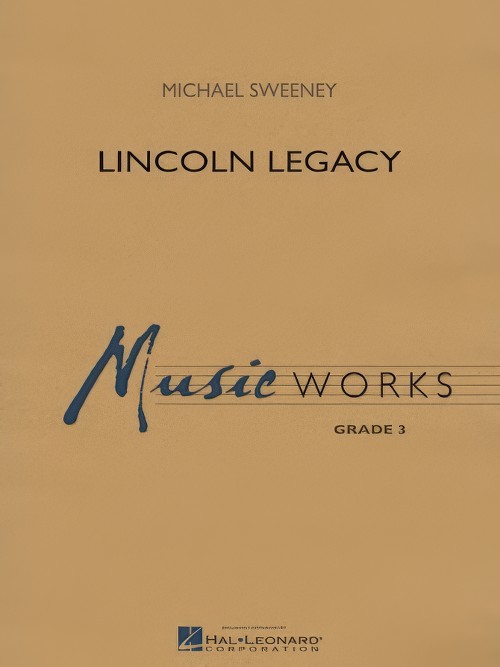 £60.99
£60.99Lincoln Legacy (Concert Band - Score and Parts) - Sweeney, Michael
Michael Sweeney uses When Johnny Comes Marching Home and Battle Cry of Freedom combined with original music to create a dramatic musical montage, commemorating the 75th anniversary of the Lincoln Memorial in Washington, and now the 200th birthday of Lincoln himself.Duration 4:10
Estimated dispatch 7-14 working days
-
 £79.99
£79.99We Hold These Truths (Concert Band - Score and Parts) - Hosay, James L.
Chosen for this piece are prominent freedom songs of the civil rights movement, for when it was most needed, music brought inspiration and hope to the struggle. We Hold These Truths pays tribute to the leaders and participants of the civil rights movement, especially the children and young adults.Duration: 7.45
Estimated dispatch 7-14 working days
-
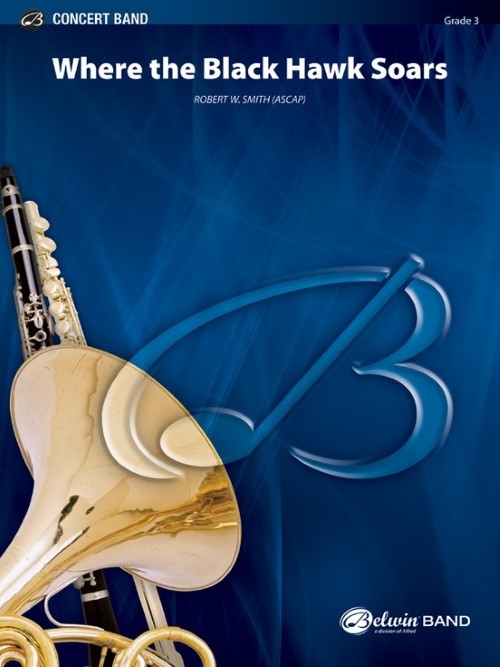 £70.50
£70.50Where the Black Hawk Soars (Concert Band - Score and Parts) - Smith, Robert W.
After a majestic fanfare, a soaring melodic line appears, reminiscent of the flight of a hawk. With limitless freedom, the winged creature is master of all it surveys. The presence of the wind can be detected throughout as it carries our musical subject to new heights. A major new work by one of our generation's most successful composers. Duration: 6.00
Estimated dispatch 7-14 working days
-
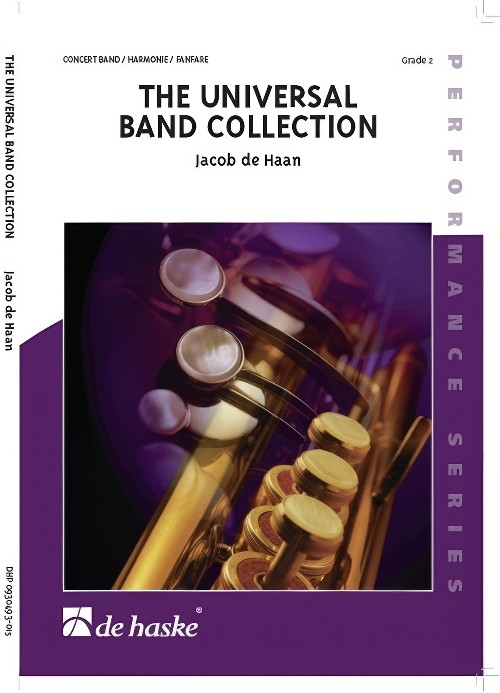 £118.99
£118.99The Universal Band Collection (Concert Band - Score and Parts) - De Haan, Jacob
A collection of 5 short works in pop style which can be performed by any kind of compilation. The titles can be presented on the programme as separate works but the Universal Band Collection can also be performed as a complete suite. From a didactic point of view it is a suitable work to teach musicians something about the structure in music. For this purpose not only the big structure but also the small structure was kept very clear.Western Girl: A girl from the west of the USA rides her horse across the prairie, dreaming of her future. The rough structure: introduction - theme in a blues scale - the same thing in a different instrumentation - finale.Just a ballad: A ballad in pop style with a rough A-B-A form. First there is the introduction of the main theme (A), then follows a tenor melody in minor with a rhythmical reference to the main theme (B). Finally there is the main melody, performed tutti with a different rhythm in the drums (A').Play the Game: An English saying meaning: play fairly. Playful music in up-tempo with a wink to China, where almost all games are manufactured nowadays. Once again an A-B-A structure here.San Diego: A Mexican fugitive enjoys his freedom in America but also remembers his place of birth with melancholy. A sad minor melody with a straight trendy beat appears twice. The second time it has a slightly different instrumentation, in which the muted trumpets represent the Mexican feeling.Final Dance: Eventually there is a dance with an introduction in renaissance style, followed by a fast dance in rock style. All this composed in a classical song structure: introduction, verse, bridge, chorus, shortened verse, bridge, chorus, chorus.Duration: 10:30
Estimated dispatch 7-14 working days
-
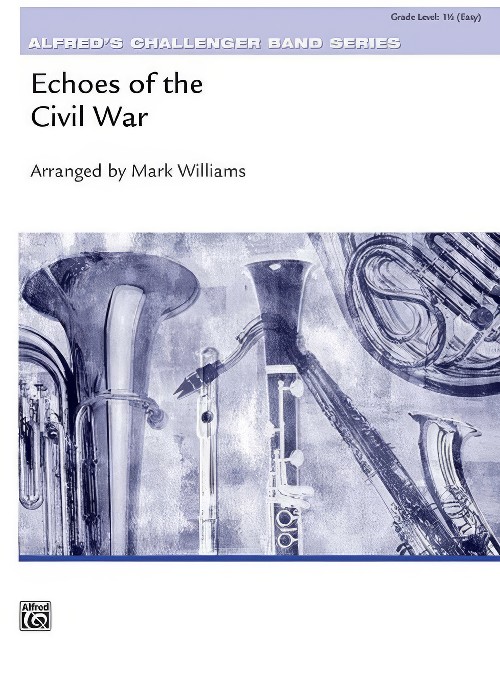 £43.50
£43.50Echoes of the Civil War (Concert Band - Score and Parts) - Williams, Mark
This nostalgic arrangement of Civil War tunes begins with a peaceful woodwind statement of the 'Battle Cry of Freedom.' A trumpet and drum fanfare brings contrast and heralds the arrival of an upbeat section where 'Dixie,' played by the woodwinds, is superimposed over the opening tune in the brass. A stirring piece, filled with bittersweet pride and respect for an important period in American history. Duration: 3.30
Estimated dispatch 7-14 working days
-
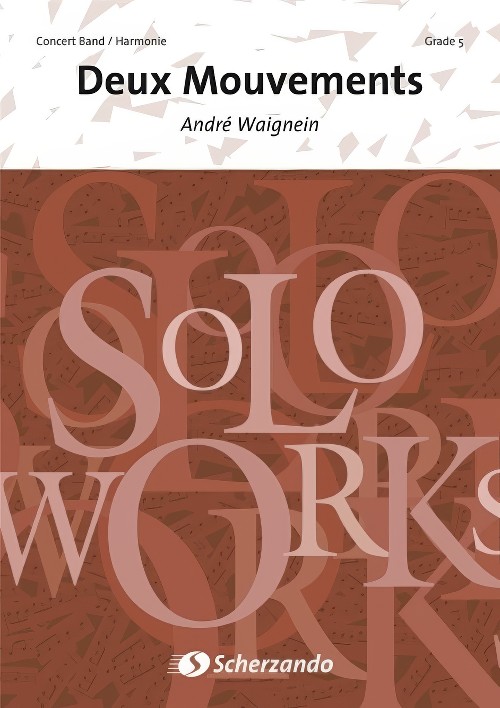 £154.99
£154.99Deux Mouvements (Alto Saxophone Solo with Concert Band - Score and Parts) - Waignein, Andre
Early in 1989 Jean Baily, director of the Royal Conservatoire in Bruxelles, asked his very close friend Andre Waignein to compose a piece which could be performed by the conservatoire's saxophone class. Andre Waignein was readily agreeable. Not only was his father a saxophone player, but himself felt strongly attracted to the instrument and he was further encouraged into accepting the commission by his friend Alain Crepin, saxophone teacher at the Bruxelles Conservatoire.The piece he composed consists of two movements, hence the title. An elegy is expressed by means of a melody which is full with pronounced magnanimity, full of spectacular musical freedom enabling the soloist to express himself to the full. In this movement the melodic element is of the utmost importance.The capriccio, the second movement is musically disconcerting. The band's accompaniment is particularly important. Due to the high notes, the soloist brings this capriccio to a close with enthusiastic virtuosity.Duration: 9:15
Estimated dispatch 7-14 working days
-
 £84.99
£84.99Glasnost (Concert Band - Score and Parts) - Stratford, Dizzy
This composition by Dizzy Stratford symbolises the birth of the new Russia in the time of Mikhail Gorbachev with its new openness in public affairs (glasnost) accompanied by political and economic reform (perestroika). Glasnost is a work offering a modern vision of Russian music. Dizzy Stratford has chosen to combine the national hymn of the Soviet Union with two traditional melodies which, with a steady, energetic rhythm portray the wind of change and freedom in Russian society.Duration: 4:15
Estimated dispatch 7-14 working days
-
 £60.99
£60.99Air & Calypso Wind Band Set (Score & Parts)
A classic melody with Latin-American overtones and numerous changes of tempo. This composition gives the conductor freedom to bring in various percussion instruments, is wonderful for creating a mood and the orchestration is full of stunning effects. Music that is a pleasure to play! 03:15
Estimated dispatch 7-14 working days
-
 £44.55
£44.55Arioso (Concert Band - Score and Parts)
Dedicated to the Statue of Liberty, SYMBOL OF FREEDOM opens with a tuneful main theme which may be whistled by the band. This very playable, dramatic sounding and powerful march is one of Jay Chattaway's finest!
Estimated dispatch 7-14 working days
-
 £179.99
£179.99Austrian Overture (Concert Band - Score and Parts)
Austria is an industrious country. During the last century--which was characterized by extreme changes--the hard-working and ambitious people achieved a great deal, enduring two world wars and numerous political skirmishes. Despite all the problems involved in a change from a dual monarchy to a small state, Austria has found its independence. With his Austrian Overture, Thomas Doss looks toward the future. The first part of the composition provides an optimistic outlook; along with the happiness and energy, some musical humor is also present: while the horns powerfully express joy, small yodeling melodies sound throughout. As the rhythm continues in search of new ways to go, catchy tunes compete to be heard. However, in addition to the energetic, diligent Austria, there's also the quiet landscape where one can enjoy repose and beauty. These aspects - as well as the freedom of spirit and cultural life -are conveyed in the second part of the work through the surprising linking of chords, romantic phrasing, and tender melodies. But life never stands still: creativity, ambition, and work are the driving forces of our existence. Embracing this thought, a reprise of the first part provides a compelling ending. 10:26
Estimated dispatch 7-14 working days
